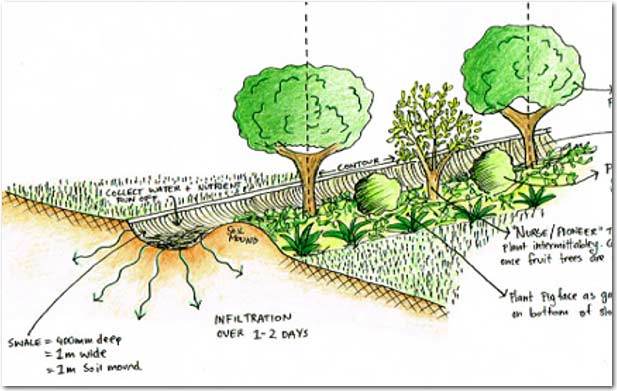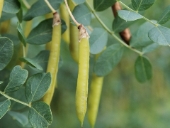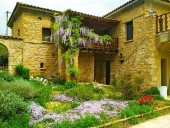
 1
1




 2
2








 2
2








 2
2




Moderator, Treatment Free Beekeepers group on Facebook.
https://www.facebook.com/groups/treatmentfreebeekeepers/





 1
1




Liz




Michael Cox wrote:You say it is overgrazed. Are there perhaps trees already there that will recover if you remove the grazing pressure? I know that this has been very effective in parts of africa where trees were allowed to regrow, and the bushy regrowth was pruned to make it more tree-like.
 1
1




Liz Hoxie wrote:I would wintersow those seeds where they'll grow. This will take care of the stratification and some scarification. Then let nature take it's course. You might want to give the sprouts a drink of polymerized water in the spring to give them some help. Plant the seeds closer together so they can help shade each other. You may lose the weaker one down the road, but it will strengthen the other one.
 2
2




 1
1




Mark Kissinger wrote:You could arrange local materials (logs, stones, earth) around the seeding bed to cause micro-niches to be formed to give protection to the shoots, and to cause rainwater flow to slow and sink in, even if it's only a little more than in the surrounding areas. Look for areas where this occurs naturally: micro niches create better odds. Inform yourself about which soil & light conditions each species prefers, and look for those conditions on your property.
I assume the land is no longer grazed? If it is still grazed, you'll need to give the sprouts some protection from being eaten or trampled.
 5
5




"Where will you drive your own picket stake? Where will you choose to make your stand? Give me a threshold, a specific point at which you will finally stop running, at which you will finally fight back." (Derrick Jensen)




Devin Lavign wrote:Something to consider is while you have no trees it might be a perfect time to do some earth works.
You could put in swales and ponds etc... much easier when there are no trees. And once they are in, they can help provide the necessary watering needed for the trees to survive.
If you plan out your earthworks well, you could have a pretty good survival rate for trees planted. By helping sink water into the soil and promoting a higher water table on your property.

 1
1




 1
1








Mark Kissinger wrote:If your intent is to retain moisture to enhance it's availability for vegetation, discover the applications of Hugelkultur:
The basic idea is bury your pond in the ground, using logs, and other biodegradable material as a sponge to soak up any moisture that would normally make you pond: it is held in the buried organic sponge.
This puts the water storage underground, where your seedlings can access it, and it also reduces evaporation losses found when building ponds in arid climates.
It's scale-able, and a cord of wood in suitable prepared washes can act as a dam and the pond, but be entirely covered in dirt, blending in with the landscape.
Depending on your needs, you can experiment with simple installations where you want to establish your "grove of trees" (trees tend to be social, and like to have family around).
Your buried logs become a water spreading/slowing/sinking berm, upon which you sow your seeds. A few large rocks, strategically placed on the surface can also help to protect the tender seedlings.
Again, scale the installations to your needs/intents: I have used mulch for a small installation in an RV park, but the larger logs will give you a longer benefit. Try not to bury green plants, although they will eventually work.
I suppose that if you bury a "symbolic" fish under your seeds, perhaps it will give your seedlings a bit of extra "food" (but will the local critters dig up the offering?)
Couldn't hurt to experiment a bit. Take notes: make a map. Follow the scientific method, apply your Permaculture design principles, and record what happens.
part of the genius of Hugelkultur is that the water can inhabit the small air-pockets found in a jumble of rotting logs, buried in your gravelly dirt, where the organic material soaks it up like a sponge..
As far as I know, horses probably will not eat the tree seedlings if there is better forage around, but rabbits might give you some competition.
Good luck with your restoration project. Let us all know how it progresses.




Mark Kissinger wrote:Another thing to consider: What is the maximum volume of water run-off that your actions will affect?
For instance, if you put in a Hugelkultur installation across a dry wash, remember that the depth of the existing erosion is an indication of how much water may be encountered periodically.
The volume of flow that is not slowed, spread out, and sunk by your installation must have an outlet or outlets for larger than expected flows to continue downhill...
Your installations may be creating mini-terraces: consider making a number of smaller installations instead of one big one, with each terrace becoming a potential seeding area.
Assuming you are doing the seeding on foot, a back pack filled with rotted logs and digging tools might be useful. One log, one mini-planting area.
Good seeding!
 2
2








Mark Kissinger wrote:Be careful about allowing unsupervised dumping. Be specific about material and location, or you'll end up with a mess.
These are ultimately "human engineered" installations, not random dumps of suitable materials.
Think of your back-pack expeditions as experiments to determine "best practices" for your property over the long term.
Choose a variety of sites and orientations and materials to see what works best in each terrain.
The idea of importing bio-char and burn logs from Colorado is good, but there may be closer sources to your Montana property.
In my humble opinion & your experience will be your guide...
Great topic!
 2
2




"Where will you drive your own picket stake? Where will you choose to make your stand? Give me a threshold, a specific point at which you will finally stop running, at which you will finally fight back." (Derrick Jensen)
 1
1




 3
3




Moderator, Treatment Free Beekeepers group on Facebook.
https://www.facebook.com/groups/treatmentfreebeekeepers/





 2
2






"Where will you drive your own picket stake? Where will you choose to make your stand? Give me a threshold, a specific point at which you will finally stop running, at which you will finally fight back." (Derrick Jensen)




Devin Lavign wrote:If you have enough rock on your land, you might want to install check dams in the gullies.
Devin Lavign wrote:You mentioned not having clay to retain water.
kevin stewart wrote:Hi
What about critters eating all those seeds?
At my place the seeds would not last the night. One year I walked around with sunflower and bean seeds in my pockets. Occasionally I would stop and kick a shallow hole in the ground and drop some seeds in. The next day I would see bean seeds dug up but the sunflower seeds were gone.
The same year I dug spade wide swales. I tossed a collection of bean and wild bird seed, just to see something grow. If I left the smallest seeds uncovered too long the ants were carting them off.
Michael Cox wrote:I'll second the calls to look at the water harvesting and potential for earthworks. If you get this right all your later work will be made much easier - your trees will establish better, you'll build fertile soil and you'll prevent erosion.
I don't think hugelkulture is appropriate in your situation - it needs resources that you don't have available on site - but you might consider it for small specialised areas.
Check dams and gabions will help in some of the eroding gullies, but you also need to address the surface run off from higher up the slopes. On contour swales, starting at the top of the hills would be a good start. These take time to get right, both for the earth moving and for laying them out properly on contour in the first place.
However you don't need to get the whole thing done in one go. I would pick a priority area and run some experiments for a year, then see what works for you.
 1
1








Mark Kissinger wrote:Or you could start out as high on your slope and install small strategically located seed fields, using local materials and small-scale rain-gathering methods..
Start small and observe the results.
The least effort necessary to get started, leaving the expensive stuff until more planning can be done.
 2
2




 4
4




 2
2




Mark Kissinger wrote:You might also consider the non-tree species that you might seed (grasses & shrubs) which can provide the edges of vegetation to provide ground cover and habitat while the trees become established. Diversity equals ecological strength.
Encourage the "human-friendly" pioneer species to cover any available niche as quickly as possible, by seeding barren areas with human-friendly pioneer species, especially as you establish your swales and cause the accompanying disruption of the existing soil horizons. Then plant succession will generally take hold to provide biological yields that suit the climate and terrain.
Determine if your intent with the property is to restore an ecological "natural" order, or to create a "human-friendly" ecological order (Which Permaculture Zone (s) are your designing for as your goal?)
I follow this thread with interest, as I am preparing to do the same on my high-desert open range land ecological regime property.
Same problems, different amounts of water.
 2
2




 1
1




Mark Kissinger wrote:Generally speaking, and depending on your terrain, starting high can mean smaller installations at first, from which you can determine the downstream effects, before starting your next round of "adjustments", which can tend to grow in size as you work your way down the slope.
You are on the right track...I'd say...




 2
2




 4
4




Alex Arn wrote:Joe, what did you end up doing? I'm in a similar situation with a property in Northern Wyoming (10 inches a year) and I'm curious what worked for you and what didn't.
 1
1




 1
1




 1
1




 1
1




Nicola Stachurski wrote:I am interested too.
I live in an Australian subtropical area that has lost it's Wet Season over the last decade. That means it is now arid- though I doubt many locals would agree.
 1
1




 2
2




Alex Arn wrote:Thanks for the reply, Joe. There are a lot of debris scattered around the old homestead so I will take a look when I am there in a few weeks and see if there is any wood I can use to do something similar.

|
I don't always make ads but when I do they're tiny
Learn Permaculture through a little hard work
https://wheaton-labs.com/bootcamp
|





